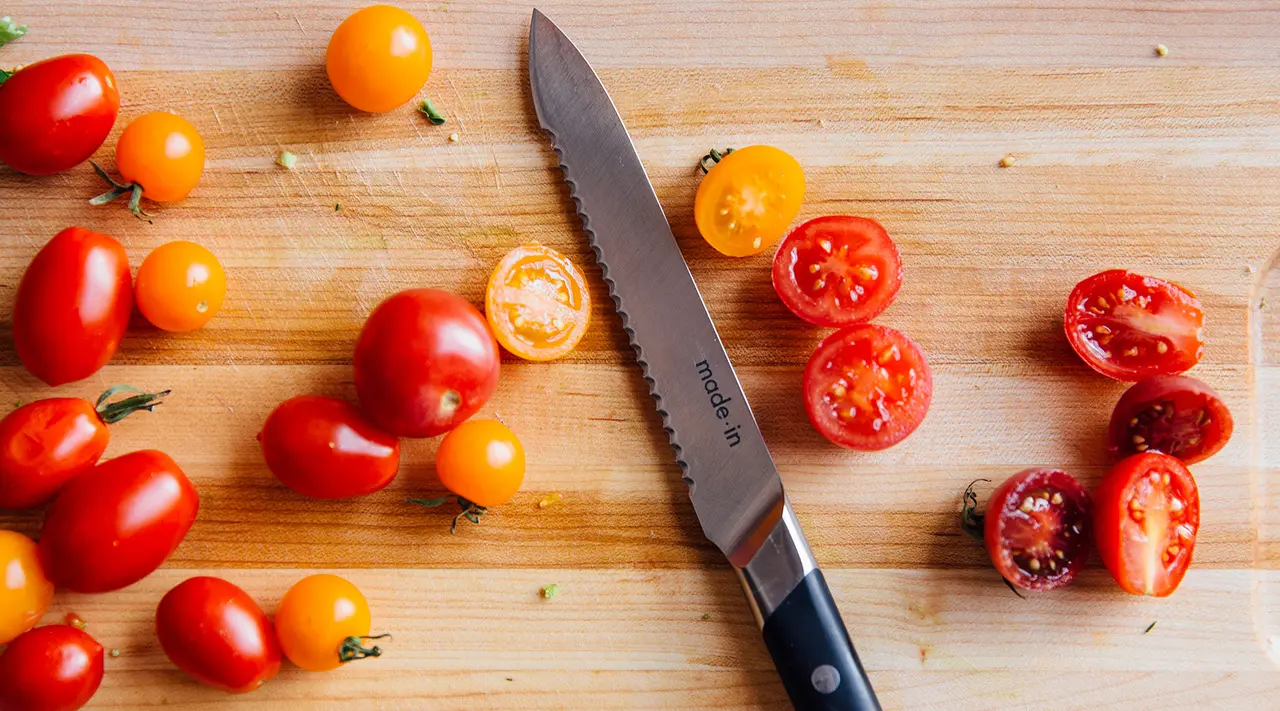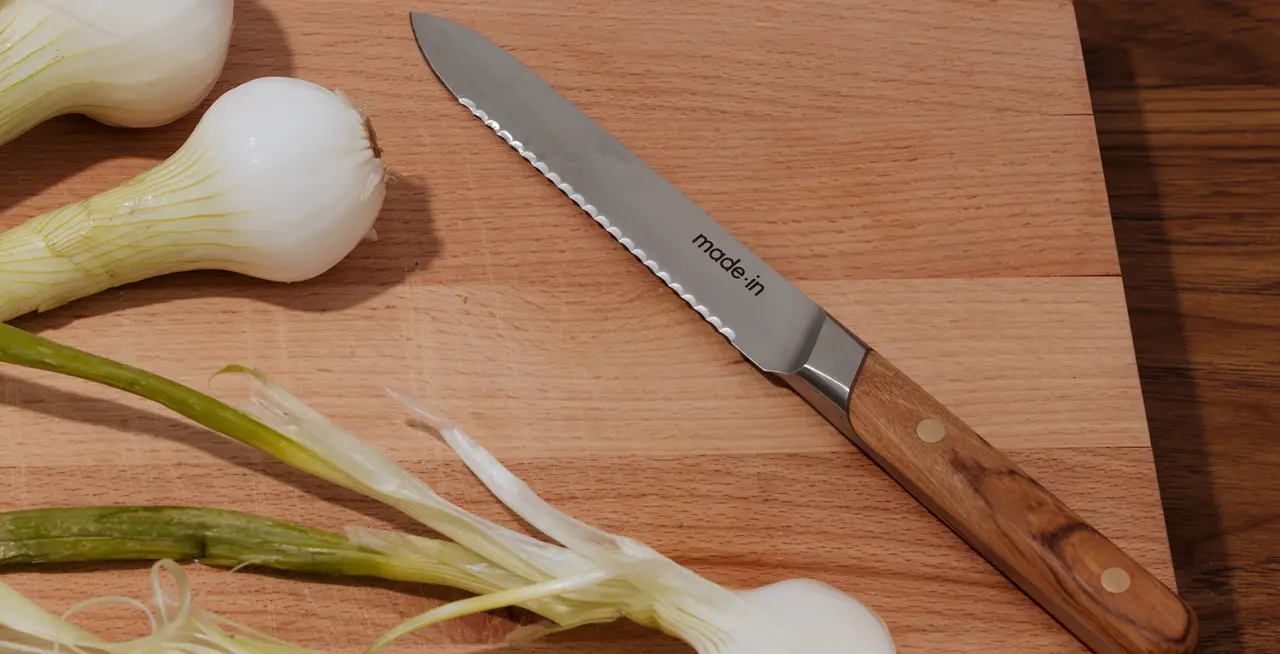Chef knives and paring knives are both irreplaceable tools in our kitchens. Yet oftentimes, we find ourselves needing something in between these two classic blades, one that has the precision of a paring knife but with more power and coverage. Enter the utility knife, which sits squarely in the middle of the two. In this post, you’ll learn about the origins of this lesser-known yet incredibly useful knife, as well as the many ways a utility knife can fit into your current collection.
What Is a Utility Knife?

Whereas a chef knife typically has an 8 inch blade or longer, a utility knife (sometimes called a petty knife) measures just around 5 or 6 inches—slightly longer than a paring knife, which is typically around 4 inches in length. The utility knife was invented in Europe in order to clean and process wild game, according to Josh Donald, author of the 2018 knife enthusiast’s manual Sharp. In Japan, petty knives were invented as an answer to the utility knife, and while the two styles were once distinct from one another, the terms “petty knife” and “utility knife” are now used interchangeably.
While most utility knives have a similar shape featuring a slightly curved blade that tapers near the tip, there are some slight variations among different knives—some are serrated while others are not, some are straighter and more triangular, while others are a bit more curved. Like chef knives, you can purchase a utility knife with a bolster or without one, depending on your preference.
What Is a Utility Knife Used For?

Utility knives are well-suited to tasks like dicing raw tomatoes and other vegetables, thinly slicing meat, and even for filleting and breaking down whole chickens (though we don’t recommend using them for hacking through bones, nor for cutting hard vegetables like winter squash). They’re also helpful for tasks you might use a paring knife for, such as peeling vegetables and fruits, mincing shallots and herbs, and hulling strawberries, and are fantastic for making thin slices of cured meats like salami.
Benefits of Using Utility Knives
A utility knife is suited to many of the same tasks as a chef knife, but allows you to wield just a little bit more control while doing it. If you have small hands or simply enjoy the precision a smaller blade brings, a utility knife can make an excellent supplement to your knife collection (though we recommend it as a complement to, rather than a replacement for, a chef knife).
What to Look for In a Utility Knife

Similar to a chef knife, a utility knife should be comfortable to wield and have a sharp blade that holds its edge for a long time without needing frequent sharpening. It’s a good idea to try your utility knife out before buying, if you can—the handle should be easy to grip and not too bulky, and the knife should feel easy to wield without tiring your hand out quickly. A bolster will offer added protection from slipping and cutting yourself, and can also make for a more balanced knife.
In terms of material, Japanese utility knives will often have a thinner, harder metal than western knives, though Japanese and western knives have come to resemble each other more and more over the years. You can also buy utility knives that are fully forged (these higher-end options are typically pricier) or stamped.
Ready to Shop?
If the idea of a mid-size knife with all the cutting power of a chef knife, yet the precision of a paring knife, sounds good to you, you may want to consider adding one to your arsenal. Like chef knives, utility knives come in an impressive array of shapes, styles, and weights—it’s all about finding the one that feels the best in your hand.
Like our Chef Knife, our new Utility Knife is full tang, fully-forged, and comfortable to hold, with a super-sharp, durable edge that’ll last for months without sharpening. Time to get started on that homemade charcuterie board.
























